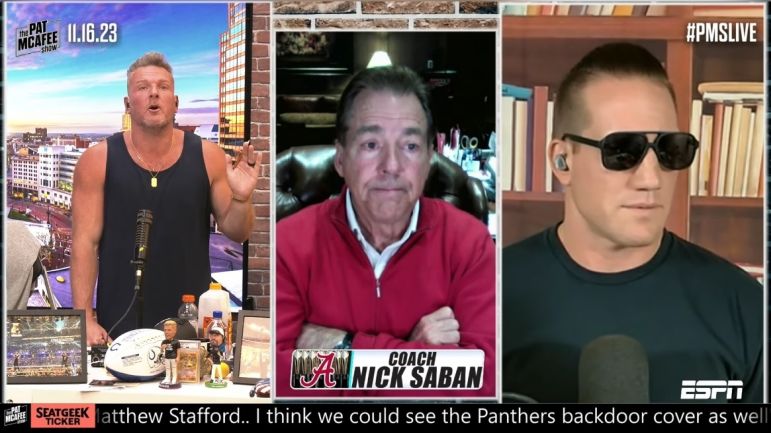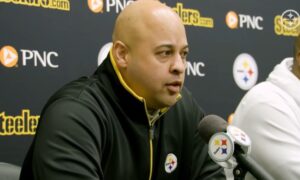You’d be hard-pressed to find someone with a better football IQ than Pittsburgh Steelers FS Minkah Fitzpatrick. A dude who eats, sleeps, and breathes football, his rare work habits weren’t just born once he got into the NFL. They started in his home state of New Jersey, and he went to the perfect college, Alabama under Nick Saban, to learn all he could from one of football’s best defensive coaches.
In his weekly appearance on the Pat McAfee Show, Saban was asked about Fitzpatrick’s input on the Steelers’ final play call to beat the Green Bay Packers. By now, most fans know the story. Fitzpatrick advised DC Teryl Austin to change from a press-man look to playing “sticks” coverage, putting seven players on the goal line on the final play of the game, one where the Packers had to put the ball in the end zone. It worked as QB Jordan Love was picked off by S Damontae Kazee to end the game. For Saban, hearing that story comes as little surprise to someone whose known Fitzpatrick for so long.
“Minkah came here as a guy that had great football savvy,” Saban told the show. “He’s one of those attention-to-detail guys. And he wanted to learn as much about the game as he possibly could because he was really driven to be the best player that he could be. He had all the right competitive characteristics. He was a great person. He did everything, was a good leader.”
Like QB Kenny Pickett, another Jersey native, the Steelers have an office inside their facility that Fitzpatrick uses for extra tape study. While his football “instincts” are often praised, they’re built off a total understanding of scheme, tendencies, and how the game is unfolding. You don’t just luck your way into 19 interceptions over your first six seasons.
With Fitzpatrick sidelined by a hamstring injury since early in Week Eight, the Steelers have been hampered by not having the three-time All-Pro selection on the field. But it’s a testament to his work ethic and dedication to stay engaged and find ways to help the team even from the sideline.
For Saban, he’s been in those situations before, especially at the NFL level around older and veteran players. He told the story of players offering similar advice in an end-of-game moment against the Dallas Cowboys while Saban served as defensive coordinator for the Cleveland Browns.
“We were up by four,” he said. “They had to score a touchdown. It was 4th and 6 at the 6, and we have a big huddle on the sidelines. ‘Red Two’ was our base coverage down there inside the 10-yard line, which the players had a lot of confidence in. Bill [Belichick] is talking, I’m talking. Players all look at me and just say, ‘Why don’t we just play Red Two?’ Eric Turner tackled [TE Jay Novacek] short of the goal line and we won the game.”
And just because they’re the rabbit holes we love going down, here’s a look at that play. It came in 1994. With 10 seconds left, the Browns took a timeout, and you can see Belichick and Saban talking as the Browns’ defense comes to the sideline. Saban huddles them up and together they come up with a final play call. It worked well-enough, Troy Aikman hitting Novacek inches from the goal line, and the Browns won to move to 10-4 on the year (they’d go on to lose in the playoffs to Pittsburgh).
In an ego-driven world, some coaches might bristle at the idea of players providing input on calls. Saban welcomes the chatter.
“They have to believe in what you’re doing,” he said. “So if you call something and they don’t believe in it, it’s probably not gonna work. Sometimes, it’s good to listen, to hear what they have to say.”
Austin experienced that first-hand Sunday. As our Matthew Marczi wrote earlier in the week, credit to him and the coaching staff for being open to such input. Not every coach is willing to do that but the good ones, like Saban, are.








